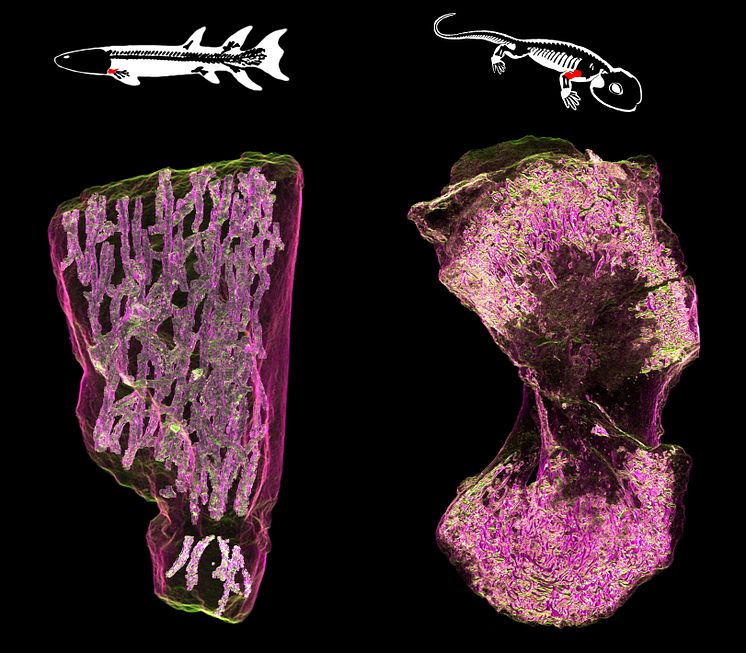
Image -
Lobe-finned fish tetrapod
The figure shows the divided internal structure of a bone from the 380 million-year-old lobe-finned fish Eusthenopteron (left) contrasting with the open marrow cavity of the limb bone of the tetrapod Discosauriscus (right), where haematopoiesis could occur.
Sophie Sanchez
- License:
- Media Use
The content may be downloaded by journalists, bloggers, columnists, creators of public opinion, etc. It can be used and shared in different media channels to convey, narrate, and comment on your press releases, posts, or information, provided that the content is unmodified. The author or creator shall be attributed to the extent and in the manner required by good practice (this means, for example, that photographers should be attributed).
- By:
- Sophie Sanchez
- File format:
- .jpg
- Size:
- 3247 x 2842, 6.51 MB